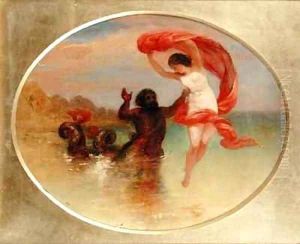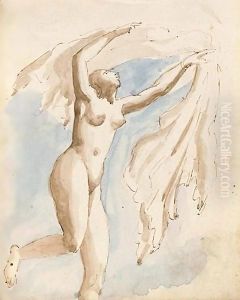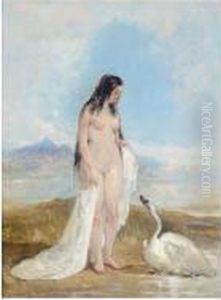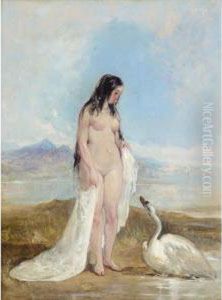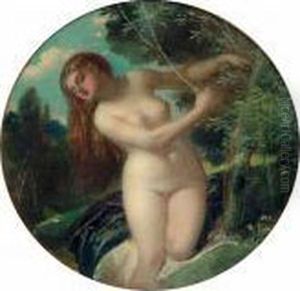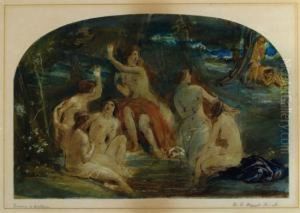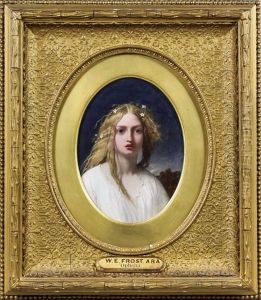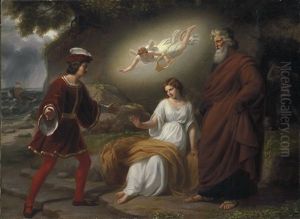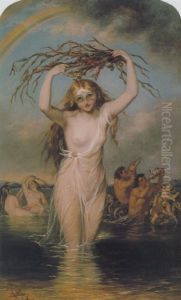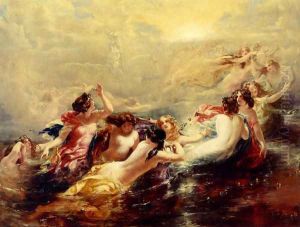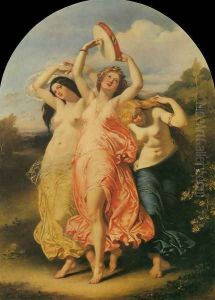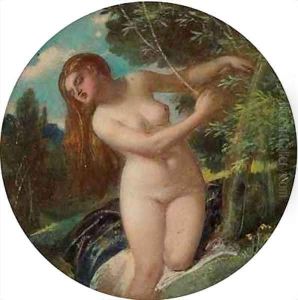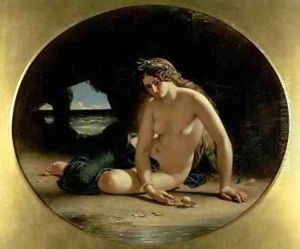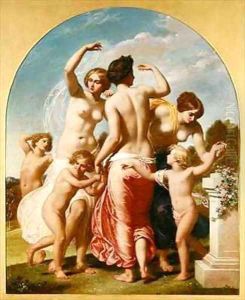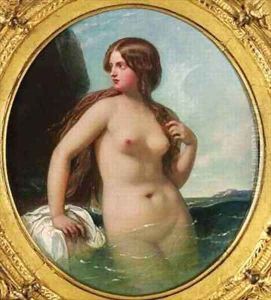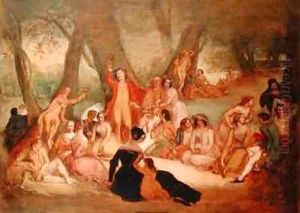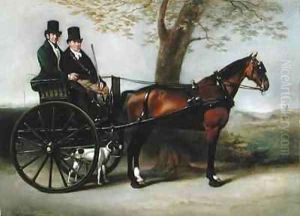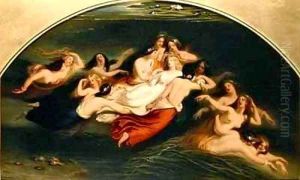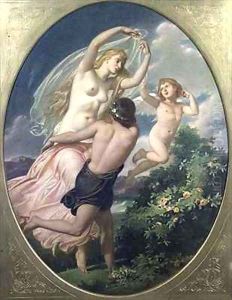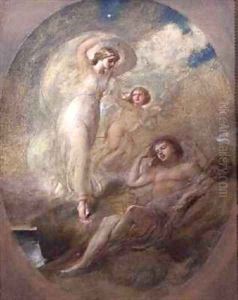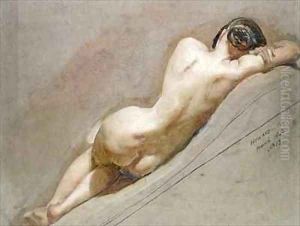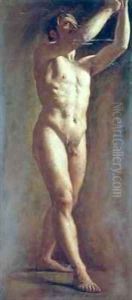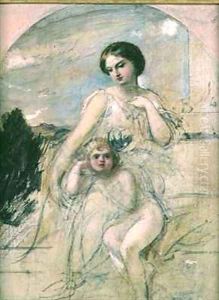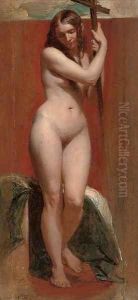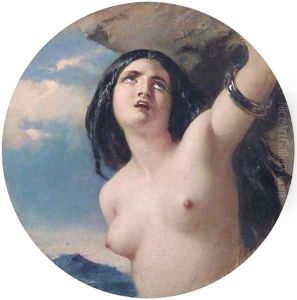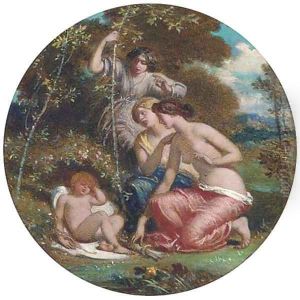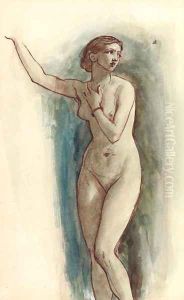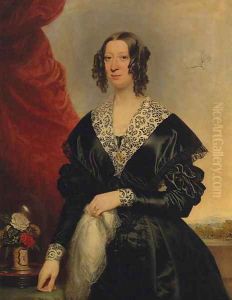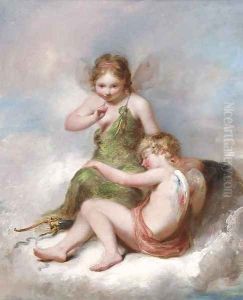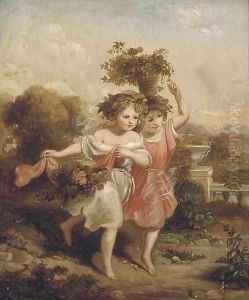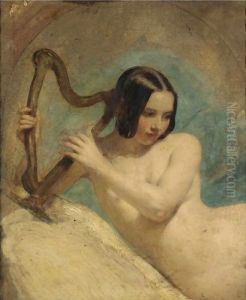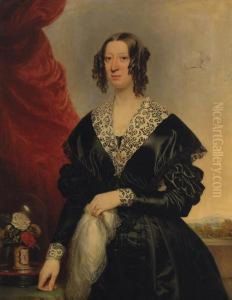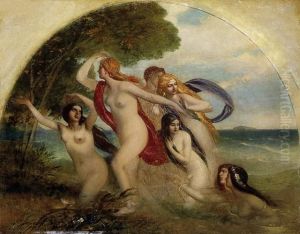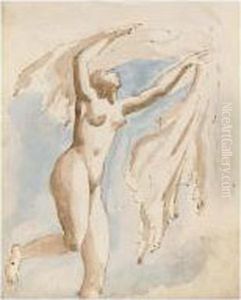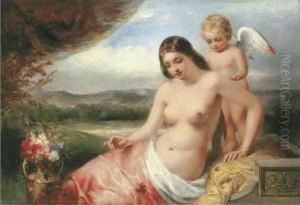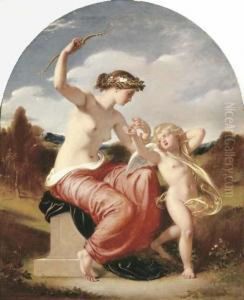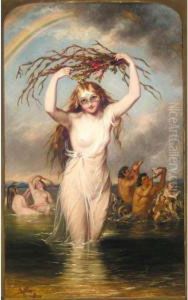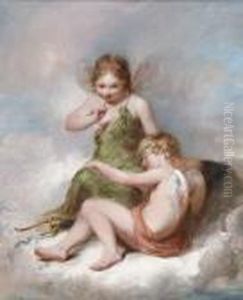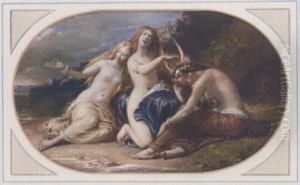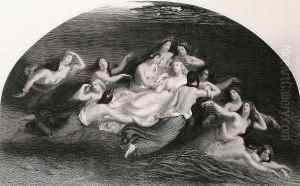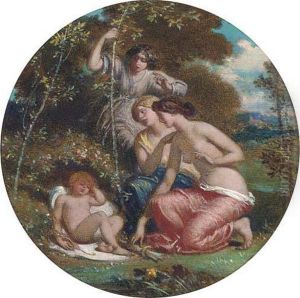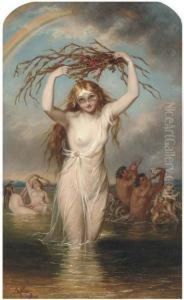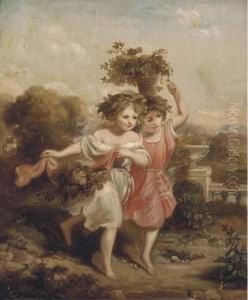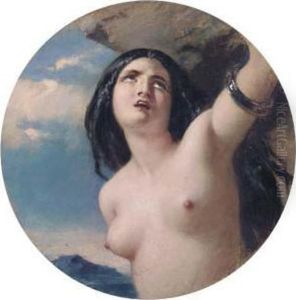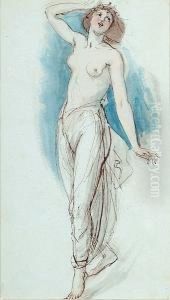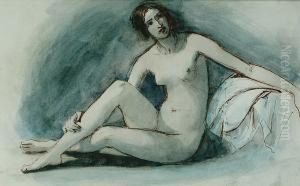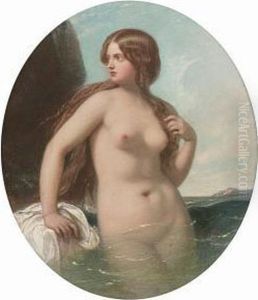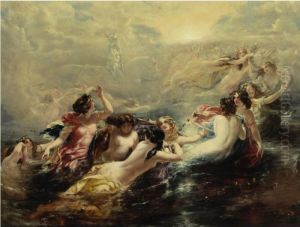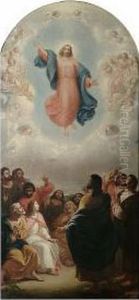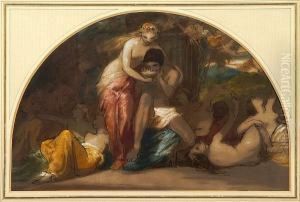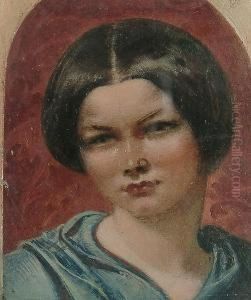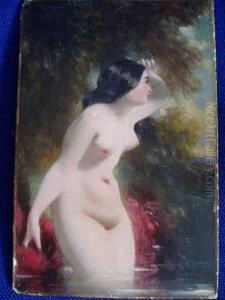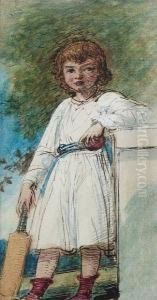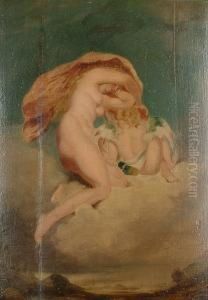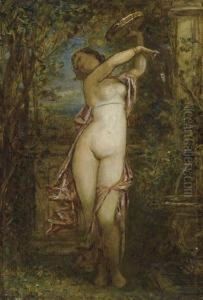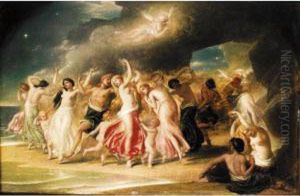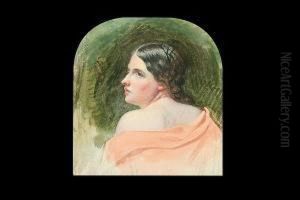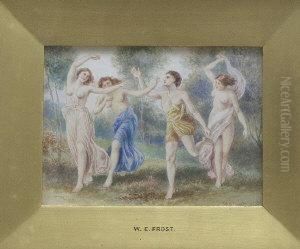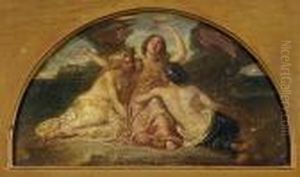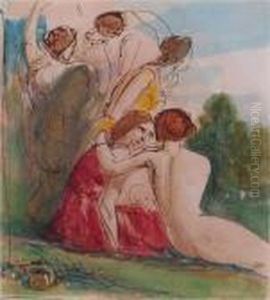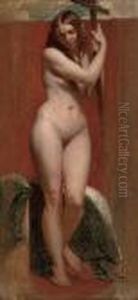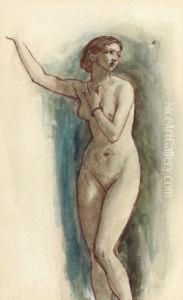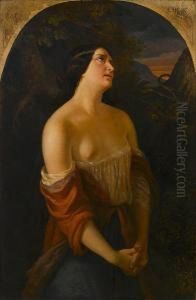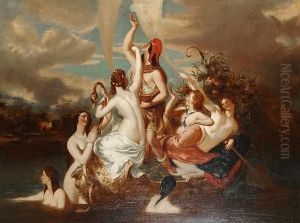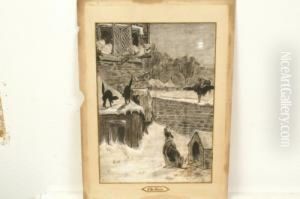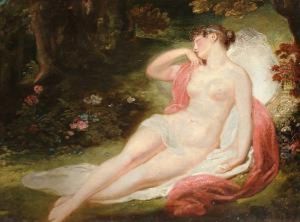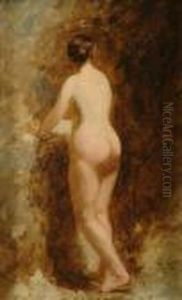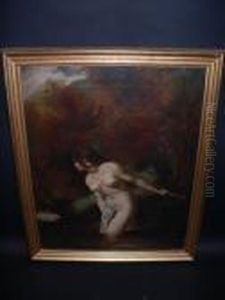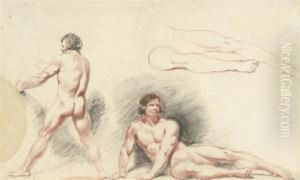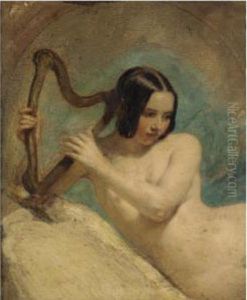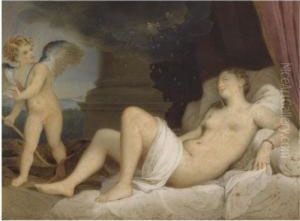William Edward Frost Paintings
William Edward Frost was a notable British artist of the 19th century, particularly renowned for his works that depicted allegorical and mythological subjects, often focusing on the female form. Born on September 22, 1810, in Wandsworth, London, Frost displayed an early talent for art which led him to pursue formal training.
Initially, Frost trained under the tutelage of Sir William Beechey, an accomplished portrait painter. However, his artistic journey took a significant turn when he entered the Royal Academy Schools in 1829. There, he honed his skills and was greatly influenced by the neoclassical styles prevalent at the time. Frost was also influenced by the works of Sir Thomas Lawrence, a leading English portrait artist of the late 18th and early 19th centuries.
Frost's proficiency in art was recognized early on when he began to exhibit at the Royal Academy from 1831 onwards. His work was well received, and he became known for his ability to capture delicate and refined figures, often inspired by classical antiquity. In 1839, Frost received the Royal Academy Gold Medal for a history painting, a significant honor that bolstered his reputation.
In the following years, Frost's career flourished. He was elected an associate member of the Royal Academy in 1846 and became a full Academician in 1870. Throughout his career, he continued to exhibit his work regularly at the Academy's exhibitions, earning a considerable amount of acclaim.
Frost's paintings are characterized by their romantic and dreamlike quality, often featuring nymphs, fairies, and other fantastical elements set in idealized landscapes. His approach to the human figure was marked by a sense of idealism, with an emphasis on beauty and purity. Despite the changing tastes in art during his lifetime, Frost remained committed to his style, which reflected the enduring appeal of classical and mythological themes.
William Edward Frost passed away on December 4, 1877, leaving behind a legacy of work that continues to be appreciated for its technical mastery and enchanting subject matter. His paintings are held in various collections and museums, serving as a testament to his skill and the lasting popularity of neoclassical art in the Victorian era.
